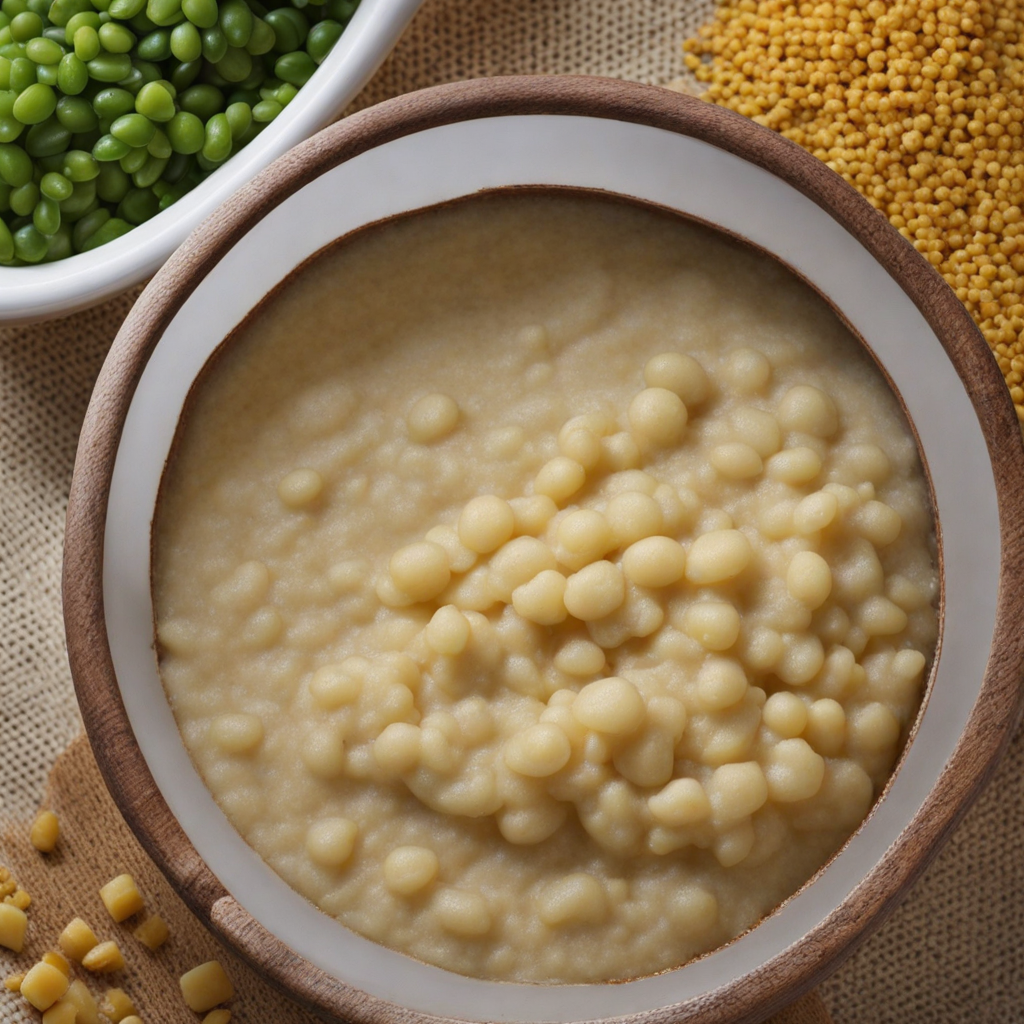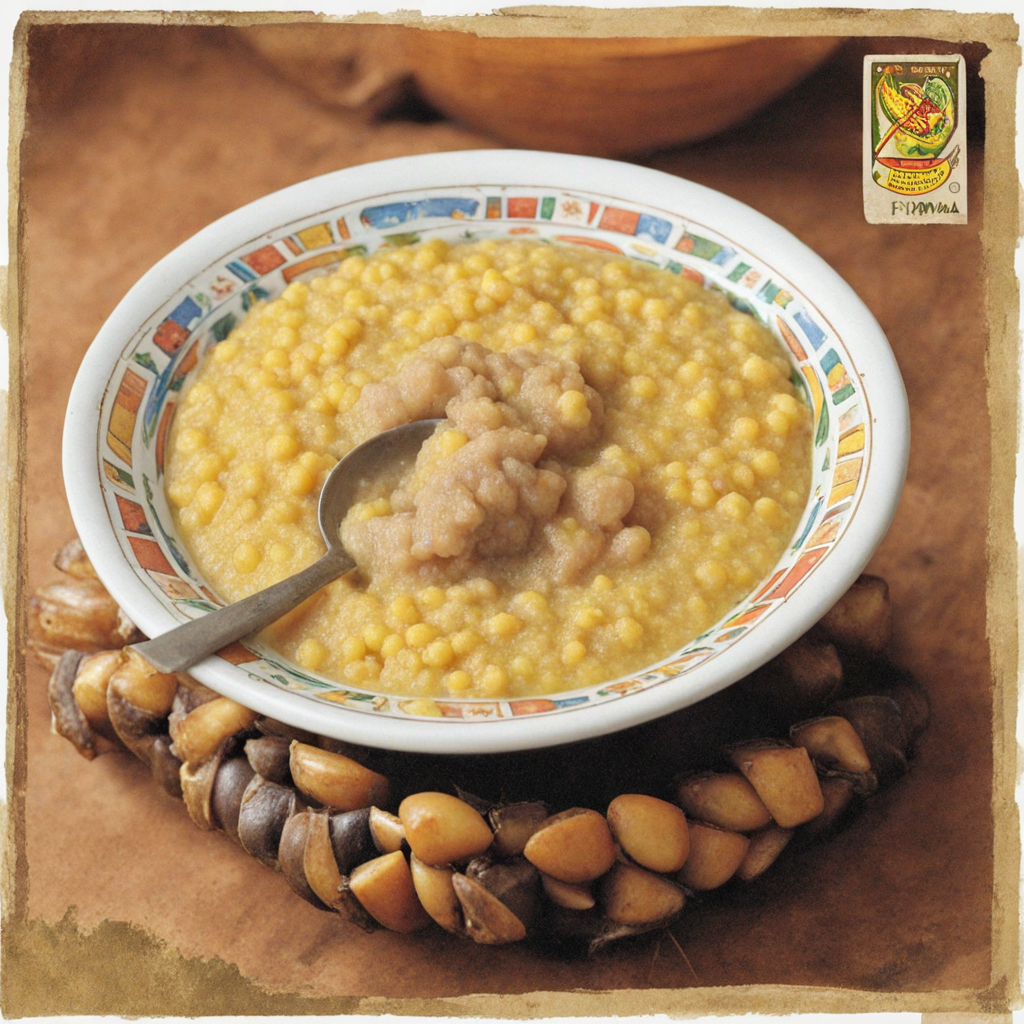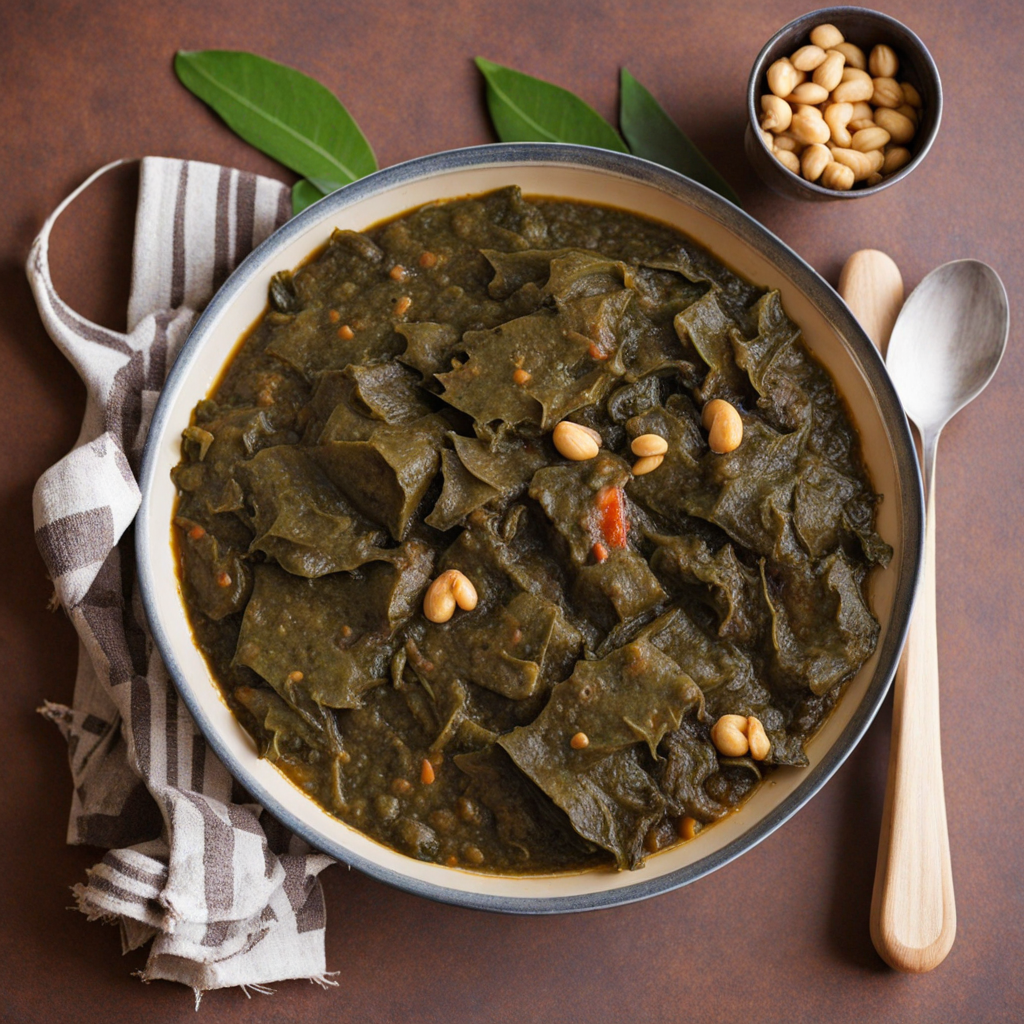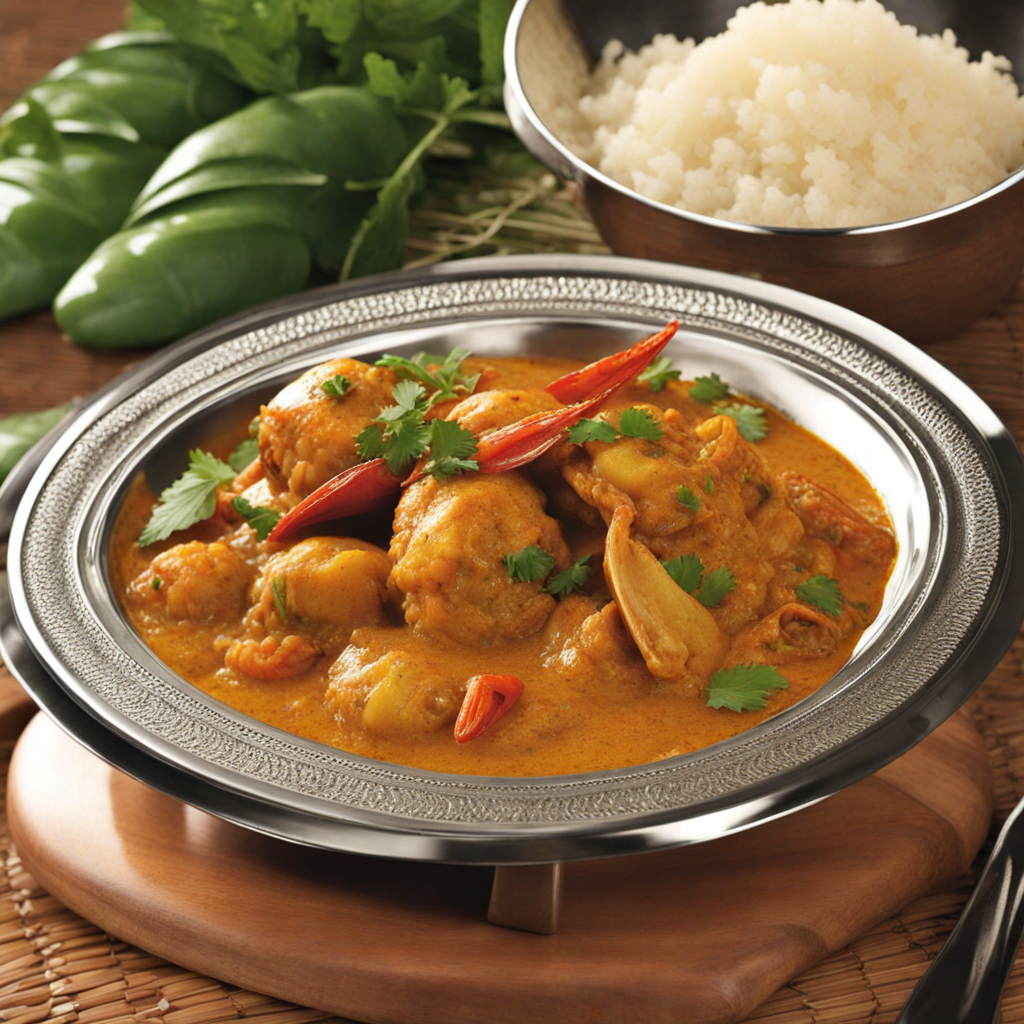Xima
Xima, a staple food in Mozambique, is a type of porridge made primarily from cornmeal, known for its versatility and cultural significance. It represents not only a dietary staple but also a symbol of communal and family gatherings in Mozambican society. The dish has its roots in the agricultural practices of the indigenous peoples of Southern Africa, particularly among the Bantu tribes, who cultivated maize long before colonization. Over centuries, xima has evolved, blending influences from various cultures, reflecting Mozambique's rich history of trade and interaction with Arab, Portuguese, and Indian communities. The flavor of xima is subtle and mild, allowing it to act as a perfect accompaniment to a variety of savory dishes. It absorbs flavors well, making it an ideal base for stews and sauces, which are often rich in spices and ingredients. When properly prepared, xima boasts a smooth, creamy texture that can be somewhat dense, yet it remains light enough to complement heavier dishes without overwhelming the palate. Its neutral taste serves to balance the robust flavors of traditional Mozambican cuisine, which often includes ingredients such as fish, chicken, and vegetables. Preparation of xima is straightforward, yet it requires a degree of care to achieve the desired consistency. The primary ingredient is finely ground cornmeal, which is mixed with water. The mixture is typically cooked over medium heat, stirring continuously to prevent lumps from forming. The cooking process involves gradually adding water to the cornmeal until it reaches a thick, porridge-like consistency.
How It Became This Dish
The History of Xima: A Culinary Journey Through Mozambique #### Origins of Xima Xima, a staple dish in Mozambique, has its roots deeply intertwined with the agricultural practices and cultural traditions of the Bantu-speaking peoples of Southern Africa. The word "xima" itself is derived from the Tsonga and Shangana languages, where it signifies a thick porridge made primarily from maize (corn). The origins of xima can be traced back to the introduction of maize by Portuguese colonizers in the 16th century, who brought the crop from the Americas. This introduction coincided with the existing agricultural practices of indigenous communities who had been cultivating various forms of grains, such as millet and sorghum, long before maize arrived. The adaptation of maize into local diets was a transformative moment. The crop thrived in the climate and soil of Mozambique, becoming a fundamental component of the local landscape. Over time, xima emerged as a versatile dish, characterized by its simplicity and ability to complement a wide variety of accompaniments, from meats and vegetables to sauces and stews. #### Cultural Significance Xima is more than just a meal; it is a cultural emblem of Mozambique, representing unity, sustenance, and tradition. It plays a crucial role in social gatherings, celebrations, and daily family meals. Its preparation is often a communal activity, bringing families and communities together in the kitchen. Traditionally, xima is made by boiling water and gradually adding cornmeal while stirring vigorously to avoid lumps. The result is a smooth, thick porridge that can be molded into balls or served in a mound. In Mozambican culture, food is a significant way to express hospitality and care. When guests are welcomed into a home, a meal of xima is often served alongside other dishes, signifying warmth and generosity. The dish is particularly important during festive occasions such as weddings, funerals, and religious ceremonies, where it serves not only as nourishment but as a symbol of prosperity and well-being. #### Development Over Time Throughout its history, the preparation and serving of xima have evolved, reflecting changing societal and economic conditions. During the colonial period, the Portuguese imposed certain agricultural systems and trade practices that affected local food production. However, the resilience of indigenous communities ensured that traditional practices persisted. In the face of colonial oppression, xima became a means of cultural resistance, an assertion of identity that transcended the imposed foreign influences. Post-independence in 1975, Mozambique underwent significant changes. The newly formed government emphasized self-sufficiency and the importance of local food products. Xima, as a staple, became a symbol of national pride and resilience during a tumultuous period marked by civil war and economic hardship. The dish's accessibility and the ease with which it can be produced made it a reliable food source for many families struggling to make ends meet. As urbanization increased in the late 20th and early 21st centuries, the traditional preparation of xima also saw adaptations. While many rural communities continue to prepare xima using time-honored methods, urban centers have embraced modern conveniences. Instant maize flour has become popular, allowing for quicker preparation without sacrificing flavor. This shift reflects a broader trend in Mozambique where traditional dishes are being modernized to fit the fast-paced lifestyles of urban dwellers. #### Xima in the Global Context In recent years, xima has gained recognition beyond the borders of Mozambique. As the world becomes increasingly fascinated with global cuisines, Mozambican food has started to find its place in international gastronomy. Food festivals and culinary events celebrating African cuisines have featured xima, showcasing its versatility and cultural significance. Chefs and home cooks alike have experimented with xima, incorporating it into fusion dishes or presenting it alongside global culinary influences, further elevating its status in the culinary world. Moreover, the rise of the "food as identity" movement has brought renewed interest in traditional dishes like xima, as they serve as vessels for cultural storytelling. Through xima, chefs and food enthusiasts are exploring the narratives of Mozambique—its history, struggles, and triumphs—creating a platform for cultural dialogue and appreciation. #### Xima Today Today, xima remains a beloved staple in Mozambican households. It is often served with a variety of accompaniments, such as "matapa" (a dish made with cassava leaves), grilled fish, or spicy stews. The adaptability of xima allows it to pair with local ingredients, making it a canvas for flavors and culinary creativity. In Mozambique, xima also embodies the spirit of community and resilience. During times of crisis or hardship, it serves as a reminder of the strength found in shared meals and collective identity. Local markets continue to thrive on the sale of maize and associated products, ensuring that this integral part of Mozambican culture remains accessible to all. As Mozambique moves forward, the legacy of xima is woven into the fabric of its society, standing as a testament to the enduring nature of traditional foods in the face of change. Whether enjoyed at a family meal or served at a festive gathering, xima is a dish that nourishes both the body and the soul, bridging generations and cultures in the process. #### Conclusion In conclusion, xima is not merely a culinary dish but a symbol of Mozambique's rich history, cultural identity, and resilience. From its origins in indigenous agricultural practices to its status as a national emblem, xima has evolved alongside the people of Mozambique. Its journey reflects the complexities of colonial history, post-independence struggles, and the modern-day quest for cultural preservation and innovation. As Mozambique continues to embrace its culinary heritage, xima will undoubtedly remain at the heart of its gastronomic narrative, celebrated not just for its sustenance but for the stories and traditions it carries with it.
You may like
Discover local flavors from Mozambique







